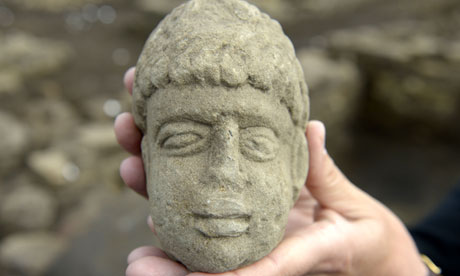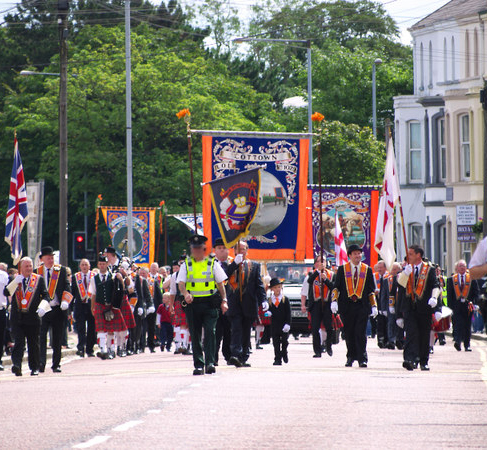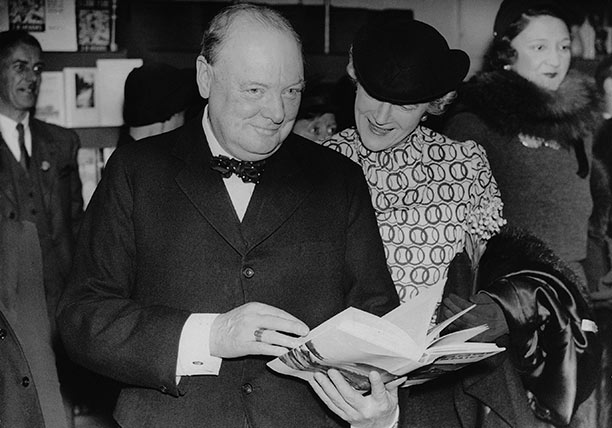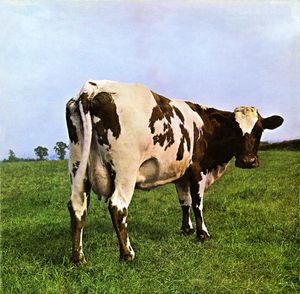Here at The History Press we are big fans of crime fiction and we jumped at the chance to ask two of our authors some questions about the ins and outs of writing historical crime fiction. From social media to writer's block, David and Terence share the secrets of successful crime fiction writing. Set in Bath in 1803, their new book, The Regency Detective, is published this month by The Mystery Press (The History Press’s crime fiction imprint) and features Jack Swann, an unofficial consulting detective to the Bow Street Runners in London.
![David Lassman and Terence James at the Cresent in Bath David Lassman and Terence James at the Cresent in Bath]()
Why write crime fiction?
DL. It is a genre that has always fascinated me – nurtured no doubt through reading Sherlock Holmes stories from childhood. Dickson Carr’s locked room mysteries also enthral me - hopefully we will write one for Swann in the future.
TJ. I agree with David. I have always loved the genre and grew up with Sherlock Holmes. There are definite echoes between Holmes and Swann, although being set much earlier our character has less science to rely on – in fact, almost none. In this way then, we experience crimes that need more than fingerprints and DNA to solve them, with Swann leaning more on observation, deduction and intuition.
Where did the inspiration for The Regency Detective come from?
DL. The idea was originally developed as a television series. This arose after I had watched a documentary about Life on Mars, in which the writers revealed they created it as production companies always wanted ‘cop shows’. They didn’t want to write a modern-day one, however, and so had looked to what they knew best – the detective shows of the 1970s (most notably The Sweeney). This got me thinking and as I didn’t want to set one in the present day either – and I am involved in the Jane Austen Centre and Jane Austen Festival in Bath – the rest followed naturally.
How important is location (i.e. Bath) in your book?
DL/TJ. Bath is very important to The Regency Detective – so much so that we see it as one of the main characters and hopefully, by the end of the book, you come to know the city as an old friend. We always believe a good setting is essential for any book, as it can add some much to the story and characters seem to come off the page more alive if set against the backdrop of a great location. Bath has such an illustrious history, stretching all the way back to Roman times and beyond. Apart from the Roman Baths, its real attraction to visitors today is, of course, the incredible Palladian architecture which still exists from the 18th and 19th centuries and which is described in The Regency Detective. So much so that one can literally follow in the footsteps of Swann and his companions.
In your book a young Jane Austen is mentioned. Will she appear in future books?
TJ. Yes. She has a brief cameo in this book and there are a number of references to her life and works, but she will interact with the main characters more in future ones. This is one of the things we liked about writing The Regency Detective novel - the melding of historical fact with fiction.
What is your favourite book? / What do you enjoy reading?
DL. The Magus by John Fowles had a huge and profound impact on my life when I was younger – so much so that I went and lived on a Greek Island for three and an half years. The majority of my reading these days is taken up with non-fiction books that form the research underpinning The Regency Detective. I am currently reading Ladies of the Grand Tour, History of English Education Since 1800 and Classics in Murder. At one time I never really liked reading for research, but over the last few years have developed a passion for it.
TJ. I love Tess of the D’urbervilles by Thomas Hardy. Coming from the world of television and film, I find it a very visual novel. There are so many set piece visual moments – the May dance at Marlot as the novel opens, Angel Clare carrying Tess and the two milk maids through the puddle, and the sunrise at Stonehenge at the close. Hardy was wonderful at visual imagery; he even subtitled Under The Greenwood Tree as 'A Rural Painting of the Dutch School'. I think Tess of the D’urbervilles was well ahead of its time and has been recently rewarded by a very excellent television adaptation.
Do you have a favourite author? / Do you have a favourite fictional character?
DL. My early literary heroes were John Fowles and Lawrence Durrell – especially The Alexandria Quartet – but I suppose Austen has to top the list these days. Pride & Prejudice, which is celebrating its 200th anniversary this year, is her most famous book, although in many ways – and perhaps for obvious reasons - I prefer her two Bath-based books, Northanger Abbey and Persuasion. We do, in fact, have appearances from a couple of characters from the former in The Regency Detective. As for a favourite fictional character, I think we would have to go back to Sherlock Holmes. Mr Darcy – from Pride & Prejudice – would probably be a close second and in an earlier incarnation of The Regency Detective, Swann was actually called Darcy!
TJ. I love Austen too but from studying him at school I have always treasured the world of Thomas Hardy. In his novels we find man in the tragic context of nature and we find a poet at work too. In his novels, called collectively ‘The Wessex Tales’, we find massive changes happening to rural communities through the Industrial Revolution; the mechanism of agriculture, the coming of the railways and the migration of rural folk to towns in search of work: all good subjects for drama.
How easy/difficult is to write historic crime fiction?
DL. It can be difficult to write historic crime fiction, making sure of historical accuracy and behavioural attitudes while telling a good story and creating believable characters, but I think with Terence and myself it is easier, as we always question what we have written. Would a character have really said a particular word or phrase during that period? Did a particular street exist then or had a specific building been built yet?
Do you agree with David Baldacci that it is your responsibility as the author to write inaccuracies into your fiction, so that potential criminals do not replicate crimes?
TJ. I suppose the maxim is that the public want to be entertained and not educated. If you write inaccuracies in your fiction then you are fair game for the critics. It is finely balanced though. In all fiction you run the risk of being copied in real life. In the visual arts like film and television though, I believe the risk is greater than the written word. Anthony Burgess, for example, had no trouble with this in his novel A Clockwork Orange. It was only after Stanley Kubrick’s graphic adaptation that the copy cats re-enacted the horror of the text.
How do you avoid your characters becoming clichéd (e.g. the femme fatale, the jaded detective)?
DL. It is to really get inside the character’s heads to ask ‘what would the particular character do in any specific situation? What is it they want, what is their motivation and what are they feeling? We also show drafts to professional contacts we trust, for constructive feedback, and through that there were a couple of characters we made more three-dimensional and rounded. One tip when creating characters, is once you have a list of characteristics; gender, age, occupation etc, reverse them. You can go back to your original list afterwards, but it can be very useful as to what you come up with and some of this can be used to give characters more depth. The pregnant female sheriff Fargo is a great example, as is the happily married, quietly-spoken, gun-less Columbo.
Do you ever suffer from writer’s block? If so, how do you cope with it?
DL. I have been lucky so far in that for most of the time the words seem to flow easily and having a writing partner really helps. The way Terence and myself work is that we will develop a story to treatment stage – basically writing down what happens chronologically, without including any dialogue or detailed descriptions, and then I will go off and write a draft, putting the flesh on the bones, so to speak. We then come together again, once Terence has read the draft, and go through it page by page to find ways of improving it. Once we have made copious notes, I then use them as a basis to write the next draft and so on. If I ever do find myself stuck, or blocked though, I have learnt to go and do something completely different – a walk or domestic chores – and this seems to relax the mind enough for the words to flow again once I sit back down at the keyboard.
Have you ever based characters on people you know (e.g. an old enemy as the villain)?
TJ. We wrote a cameo in The Regency Detective for a friend of ours called Martin [Salter]. He is the meeter and greeter at the Jane Austen Centre, in Bath, who stands outside the building in authentic period costume, and in all weathers, welcoming visitors. Through this role, he is now known as the Most Photographed Man in England, due to the amount of photographs taken of him by tourists. He has helped us in various ways during the development of The Regency Detective and so we gave him (or perhaps rather an ancestor of his!) a guest appearance as master of ceremonies in the book – introducing Swann and Mary on their arrival at a charity ball. In real life, however, Martin has undertaken this role during balls held as part of the Jane Austen Festival.
How has social media helped you to market your book / you as an author?
DL. Probably the biggest way social media has helped The Regency Detective is that we are already getting a good response from America, through feedback to different websites and e-newsletters I am involved with, even though it is not due to be available there until September. If an author can utilise social media the world of opportunity really opens up. There does seem to exist a reluctance on many authors’ part to be seen to be activity promoting their book, but I am of the opinion that if I have spent a year or so writing it, I would like as many people as possible to read it. At the end of the day though, I think the social media elements have to be combined with more traditional ways of marketing. I still believe a book event and signing is the most effective way of getting readers to become fans of your work.
Finally, what next for Jack Swann, the Regency Detective?
DL/TJ. We are in the process of writing the next book in the series, which revolves around several murders at a girl’s boarding school in Bath that Swann is asked to solve. At the same time, he continues to search for his father’s killers, while investigating his sister’s suitor – the mysterious Lockhart.
Thank you David and Terence, we look forward to the next installment!
![The Regency Detective The Regency Detective]()
David Lassman is a scriptwriter, author, journalist and lecturer. He has appeared many times on television and radio, including BBC’s The One Show and Radio Four’s The Today Programme. He currently teaches at City of Bath College and runs the Bath Writer’s Workshop.
Terence James is a full-time writer and award-wining editor at ITV. Throughout his career he has held various roles on prestigious television programmes such as Man Alive (BBC) and The Avengers (ITV) as well as feature films at Elstree, Pinewood and Shepperton studios.























































































